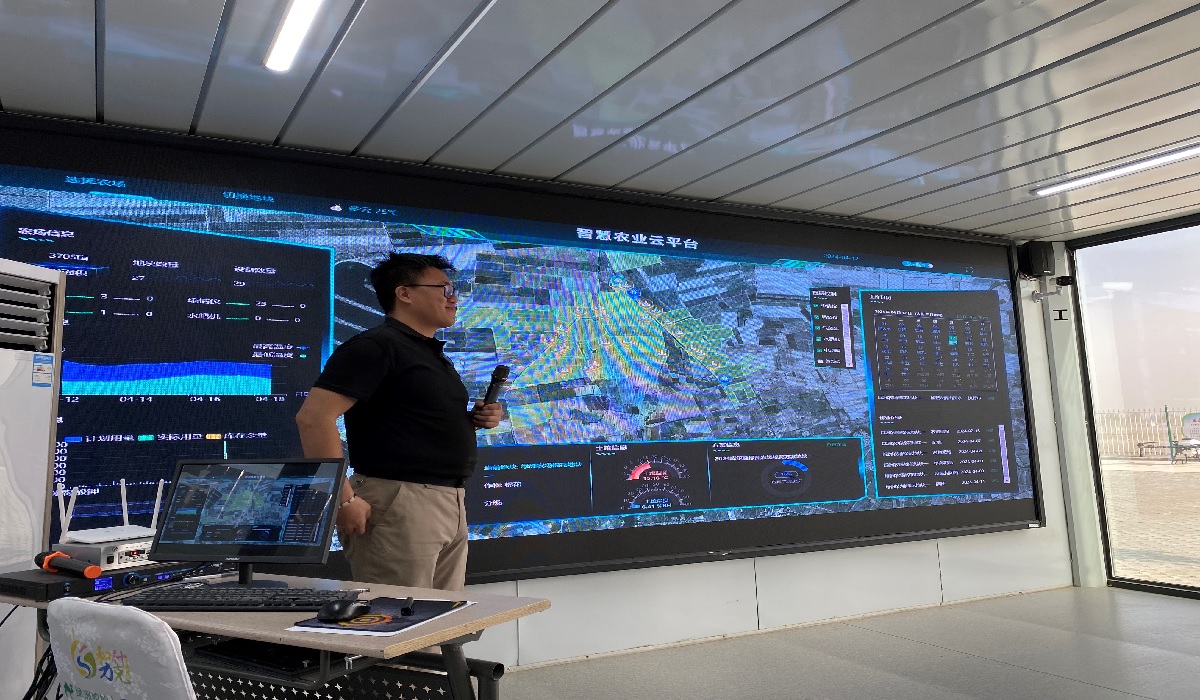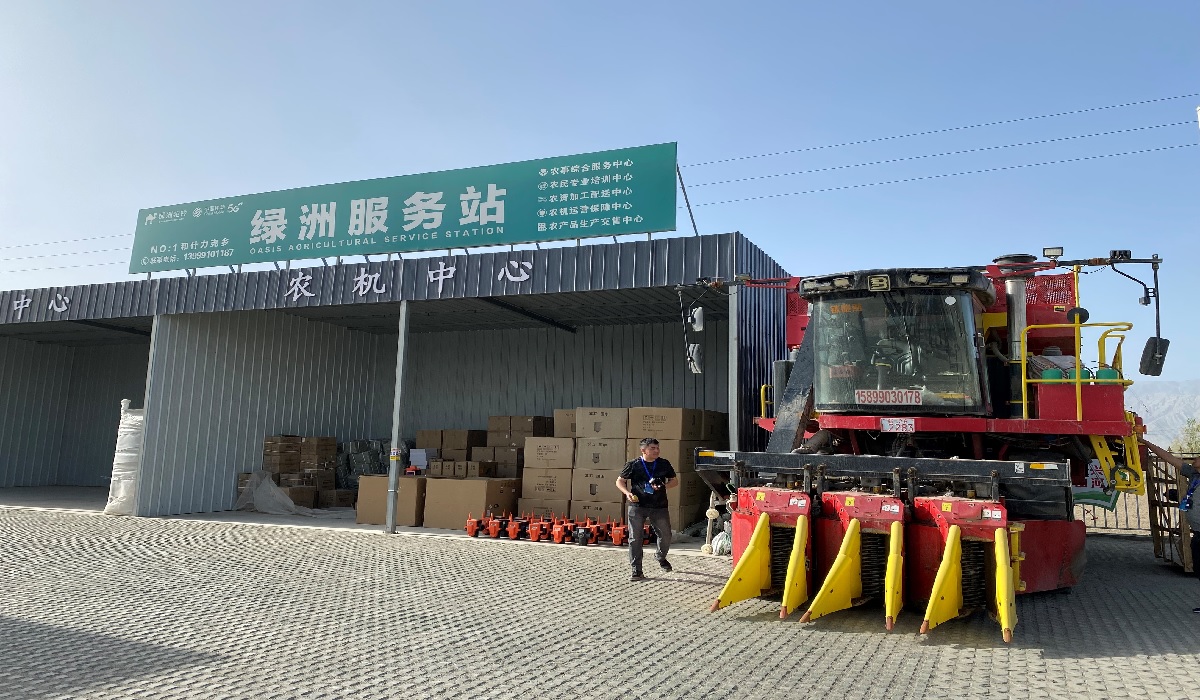China’s Xinjiang region has a vast expanse of cotton fields which stretch to the horizon. Here, amidst the rhythmic hum of machinery and the careful tending of crops, farmers are embracing technology like never before, transforming age-old practices into efficient, high-tech endeavors.
Cotton planting season is more than just a time of year; it’s a vital period that shapes livelihoods and communities. As the season approaches in October, preparations come into high gear, and the fate of the harvest hangs in the balance.
At the Oasis Technology Farm in Korla, this balancing act between tradition and innovation is on full display. As a private enterprise that not only cultivates cotton, but also leases cutting-edge machinery to fellow farmers, the farm represents the epitome of agricultural progress in Xinjiang. Here, Xiong Dazhen, a representative with six years of experience researching agricultural planting in Kazakhstan, stands at the forefront of this technological revolution.
“The most influential factor during cotton planting season is the weather,” Xiong remarks. “Through our technology, we’re able to determine the temperature of the atmosphere and forecast weather changes, allowing us to plan our activities accordingly.”
Each day, meticulous plans are laid out, guided by data collected from field sensors, satellite imagery, and weather forecasts. From planting densities to pesticide usage, every decision is informed by technology, ensuring optimal yields and efficient resource management. This digital ecosystem not only streamlines operations but also strengthens field management, setting the stage for a successful harvest.
“The cotton season is only a few weeks away, so preparations are in full swing,” notes Xiong. “We utilize advanced tech agriculture to plan meticulously, from seeding to harvesting, maximizing our efficiency and yield.”

But it’s not just about planning; it’s about execution. Drones buzz overhead, efficiently fertilizing fields with precision, while innovative methods like recycling plastics for irrigation piping revolutionize water management. With precision agriculture techniques, such as precise plowing schedules and automated budding processes, efficiency skyrockets. What once took weeks can now be accomplished in days, with every hectare meticulously tended to.
“The results speak for themselves,” Xiong proudly states. “Last year witnessed a remarkable 33% increase in cotton production, with the value of output on a steady incline. Our integration of technology has not only improved productivity but also sustainability.”
Water, a precious resource in Xinjiang, is managed well. As cotton requires a lot of water to grow, modern techniques ensure efficient water usage, minimizing waste without compromising yield. Machines, once a luxury, have become indispensable, transforming the labor-intensive task of planting cotton into a swift and precise operation.
Beyond cotton, the lessons learned here echo across agricultural landscapes. The marriage of technology and tradition isn’t just about maximizing profits; it’s about sustainability and resilience in the face of a changing climate. What begins as a journey through Xinjiang’s cotton fields is, in essence, a glimpse into the future of global agriculture.
As Xinjiang’s commitment to agricultural mechanization continues to grow, the impact is felt far beyond its borders. With 100 percent mechanization in plowing and seeding, 80 percent in harvesting, and an overall mechanization rate of 94 percent in cotton farming, the region stands as a beacon of progress. The regional government’s proactive stance on promoting mechanization has been instrumental, spurring the adoption of large-scale cotton harvesting machines among farmers and cooperatives and incentivizing companies to ramp up agricultural machinery production.
Indeed, the landscape of Xinjiang’s agriculture is being reshaped by these advancements. Fields once dotted with manual laborers are now bustling with the hum of machinery, as farmers embrace the efficiency and precision offered by modern technology. With each harvest, the region moves closer to its vision of a sustainable and prosperous agricultural future, powered by innovation, and fueled by ambition.









